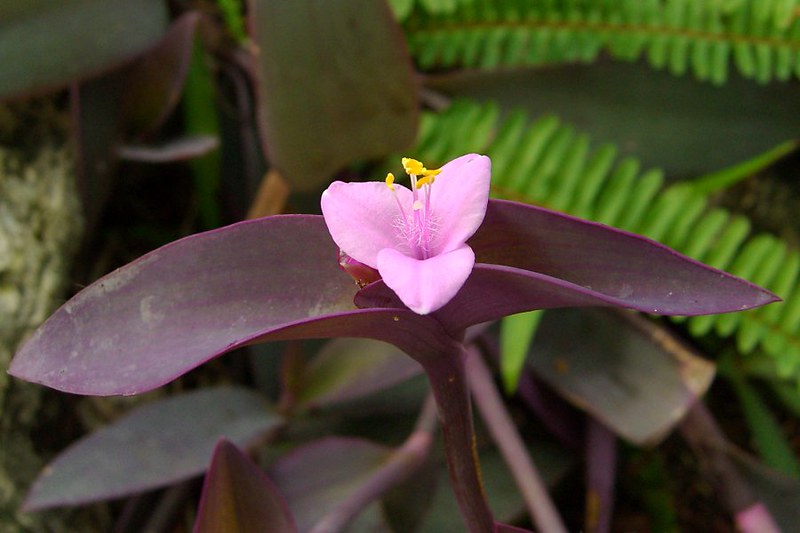The Wandering Jew plant, also known as Tradescantia, is a beloved houseplant renowned for its trailing vines and striking foliage. Among its many varieties, the Wandering Jew Lilac stands out with its delicate lilac-colored leaves that shimmer under sunlight, adding a touch of elegance to any space. Whether you’re a seasoned gardener or a beginner, caring for this variety can be both rewarding and straightforward when you understand its needs.
This article provides an in-depth guide to help you cultivate a thriving Wandering Jew Lilac plant. From lighting and watering to propagation and pest control, we cover all you need to know.
Understanding the Wandering Jew Lilac
Before diving into care instructions, it helps to understand the plant itself. The Wandering Jew Lilac is a member of the Tradescantia family, native to Central and South America. It’s a fast-growing, low-maintenance plant with eye-catching leaves in shades of green, purple, and lilac. Its trailing nature makes it an excellent choice for hanging baskets, shelves, or as ground cover in tropical gardens.
Optimal Growing Conditions
Light Requirements
The Wandering Jew Lilac thrives in bright, indirect light. While it can tolerate lower light levels, its vibrant lilac hues are most pronounced when it receives sufficient light. Here are some lighting tips:
Indoor Placement: Place the plant near a window with filtered sunlight. East or west-facing windows are ideal.
Outdoor Placement: If grown outdoors, ensure it is in a shaded or partially shaded area to prevent sunburn.
Avoid Direct Sunlight: Prolonged exposure to direct sunlight can scorch the leaves and cause discoloration.
Temperature and Humidity
This plant thrives in warm and humid environments. Aim for:
Temperature Range: 60°F to 80°F (15°C to 27°C).
Humidity: A humidity level of 50% or higher. If your home is dry, consider misting the plant or using a humidifier.
Soil Preferences
Wandering Jew Lilac prefers well-draining soil that retains some moisture without becoming waterlogged. A standard potting mix combined with a bit of perlite or sand works well. The soil should be rich in organic matter to support healthy growth.
Watering Guidelines
Proper watering is crucial for maintaining the health of your Wandering Jew Lilac. Follow these guidelines to ensure your plant receives the right amount of hydration:
Frequency: Water the plant when the top inch of soil feels dry to the touch.
Avoid Overwatering: Too much water can lead to root rot. Always use pots with drainage holes to prevent water from pooling.
Watering Technique: Use lukewarm water and pour it evenly over the soil until it drains from the bottom. Discard any excess water from the saucer.
Adjust for Season: Reduce watering frequency during the winter months when the plant’s growth slows down.
Fertilizing the Wandering Jew Lilac
To encourage lush foliage and vibrant colors, fertilize your plant during the growing season (spring and summer). Use a balanced liquid fertilizer diluted to half strength every 4-6 weeks. Avoid over-fertilizing, as it can lead to salt buildup in the soil.
Pruning and Maintenance
Regular pruning is essential for keeping your Wandering Jew Lilac healthy and attractive:
Trim for Shape: Prune back leggy or overgrown stems to maintain a compact and bushy appearance.
Remove Dead Leaves: Snip off yellowing or dead leaves to encourage new growth.
Encourage Fuller Growth: Pinch back the tips of vines to stimulate branching.
Propagation Tips
Wandering Jew Lilac is incredibly easy to propagate, making it a favorite among plant enthusiasts. Follow these steps:
Stem Cuttings
Select Healthy Stems: Choose a stem with at least 2-3 nodes (the points where leaves attach).
Cut Below a Node: Using clean scissors, make a cut just below a node.
Place in Water: Submerge the cut end in water, ensuring that at least one node is underwater.
Wait for Roots: Within 1-2 weeks, roots should begin to develop.
Plant in Soil: Once roots are about an inch long, transfer the cutting to a pot with well-draining soil.
Soil Propagation
Alternatively, you can plant the cuttings directly in moist soil. Keep the soil consistently damp until new growth appears.
Dealing with Common Issues
Even with proper care, y
Causes: Insufficient light.
Solutions: Move the plant to a brighter location or provide supplemental grow lights.
Pests
Common Pests: Spider mites, aphids, and mealybugs.
Solutions: Treat infestations with insecticidal soap or neem oil. Regularly inspect the plant for early signs of pests.
Root Rot
Causes: Overwatering and poor drainage.
Solutions: Repot the plant in fresh, well-draining soil and reduce watering frequency.
Seasonal Care Tips
Spring and Summer
Increase watering frequency as the plant’s growth accelerates.
Fertilize regularly to support vigorous growth.
Provide adequate ventilation to prevent fungal issues.
Fall and Winter
Reduce watering as the plant’s growth slows down.
Maintain consistent humidity levels to prevent leaf drop.
Avoid fertilizing during the dormant period.
Creative Display Ideas
The Wandering Jew Lilac’s trailing vines make it a versatile decorative element. Here are some ideas to showcase its beauty:
Hanging Baskets: Highlight the plant’s cascading vines by placing it in a hanging basket near a sunny window.
Shelves and Mantels: Let the vines drape elegantly over the edges of shelves or mantels.
Terrariums: Create a mini tropical environment by incorporating the plant into a glass terrarium.
Conclusion
Caring for a Wandering Jew Lilac plant is a delightful journey that rewards you with vibrant foliage and lush growth. By providing the right balance of light, water, and nutrients, you can ensure that your plant thrives year-round. Whether you’re a plant parent looking to expand your collection or a beginner eager to try your hand at houseplant care, the Wandering Jew Lilac is a fantastic choice for adding beauty and greenery to your space.
